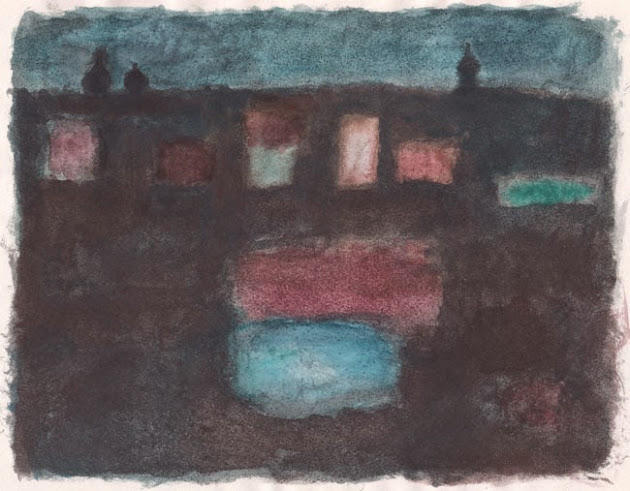-
Posts
69 -
Joined
-
Last visited
Content Type
Profiles
Forums
Store
Help Articles
Everything posted by akonsu
-
Hello, I wanted to make ganache from one part of coconut creme and two parts of white chocolate. I bought a can of coconut milk, it stood for too long on a shelf, so when I opened it, the white fat was on top and the water was separate. I took out the fat, which was solid, heated it in a microwave, and added it to the unmelted white chocolate. I expected that the resulting colloid (the emulsion) will solidify again when it cools. But this did not happen. The mixture got thicker but it is still fluid. It has been 10 hours or so in a fridge. Could someone explain this? I mean the ingredients are solid by themselves at room/fridge temperatures, why is the emulsion fluid? Or I just did not wait long enough? thanks!
-

Your Daily Sweets: What Are You Making and Baking? (2017 – )
akonsu replied to a topic in Pastry & Baking
More spiced cookies (looks more like cakes), this time using wooden moulds: EDIT: forgot to mention that they are filled with paste I made from dry fruit, candied lemon peels, and spiced rum. -

Your Daily Sweets: What Are You Making and Baking? (2017 – )
akonsu replied to a topic in Pastry & Baking
Chocolate covered spiced cookies with marzipan on top. This is inspired by Aachener Printen, but, of course, I cannot call it that. I used baking soda instead of pottasche. One of my first attempts, the cookie part turned out a bit overdone... Marzipan is handmade too. -
Hello, several weeks after I moulded some ganache filled chocolates, their shells collapsed. I have attached a photo that demonstrates the problem. I am not sure why this happened. My guess is that this is because the ganache filling dried and shrank thus either making the candy hollow or maybe the internal pressure got lower, I do not know... What did I do wrong? How to prevent this? Keep them in an air tight container (which I did not)? Or in a fridge (which I did not either)? Thanks! konstantin
-
@teonzo, thank you, that was useful. konstantin
-
Do you know why this happens? What is the physics of this? I know this is a question for a chemist, but maybe someone knows...
-
@teonzo, thank you. Yes that makes sense, given that I do add cocoa butter to baking chocolate and butter is even more expensive than couverture : ) But won't I have the same problems with couverture? If I do not change the way to I things, I mean. I do not see any difference whether I use baking chocolate or something else...
-
@keychris, thank you. When I work with white chocolate, it gets over-crystallized at the working temperature (between 28C and 29C, I try to maintain this temperature always). As I understand from what you are saying, the number of crystals increase at working temperature as well, the fact that I maintain this temperature does not mean that crystallization has stopped. (I did not realize that) It is just that these crystals (that keep growing) are of a specific form, those that have higher melting point than the working temperature, that is, the "good", beta V (or what it is called) ones, right? So once in a while I have to warm the chocolate mass higher than the melting point of beta crystals (above 34C) or add warm untempered chocolate, and hope that I did not melt all of beta crystals, and check, and if the test shows that it has lost its temper, I need to re-temper. Is all this correct?
-
For white chocolate: 45C - 26C - 29C. These are approximate, of course... For dark chocolate I use 50C - 27C (or below) - 32C. I got these from the video on tempering by Andrey Dubovik here youtube.com/watch?v=qoSCNCb62N0
-
Hello, I temper chocolate manually, by using a method similar to tabling. I melt chocolate in a microwave, then put the bowl with melted chocolate into another bowl with ice and cold water in it to start crystallization, and then I raise the temperature in a microwave again. For the first several minutes after that the chocolate consistency is fine, but then it starts getting thick too fast. I put the chocolate into a microwave for a few seconds every 2 minutes or so, to keep the temperature at the working level, but even though the temperature seems correct, I still get a lot of crystallization, it seems (is this even possible?). I use white baking chocolate from Kroger (it is a grocery store in the US), this is not a couverture chocolate. I even tried adding cocoa butter to it to make it more fluid (before tempering), but the result is the same: this chocolate becomes very thick very fast. White chocolate is supposed to start hardening after a few minutes when it is spread on a surface, right? For me, it is dry to the touch after about a minute. This is too fast, so I cannot get good quality of the surface when I dip, etc. Same result for other brands of baking white chocolate. For dark chocolate this is less of a problem because temperatures are higher, but still... How to manage this? If I melt extra chocolate to the degree when it has no crystals, I can add it to the tempered chocolate (this is what I heard others are doing), how much can I add to keep the mix in temper? I am afraid to add too much... I would appreciate any practical advice, please. konstantin
-
Thank you for this information. I did not know that people do it, I thought that it was just me and my poor chocolate skills, because this is what I had to do when I had a similar problem. The bottoms ended up thicker than I would like, though.
-
Hello, did anyone use Cabrellon for custom molds? http://www.cabrellon.it/project/custom-molds/?lang=en Could you comment on it if so?
-
@minas6907, is not it this one ? https://www.pastrychefsboutique.com/CHOCOLATE/Chocolate-Molds/polycarbonate-chocolate-molds/Modern-Shaped-Molds/chocolate-world-cw1923-polycarbonate-chocolate-mold-origami-faceted-dome-2650x2650x22-mm-95-gr-3-x-8-cavity-275-x-135-x-24-mm-mo
-
Hello everyone. Maybe this is a bad idea, and if so then I just want to confirm that: did anyone try wooden moulds? They are much easier to make... I realize that you won't get this shiny surface like with plastic moulds, so they cannot be used for this, but for other applications I think they might be acceptable. For example there are Japanese kashigata moulds that are usually made from cherry and that can be polished well. Might this be a feasible alternative to polycarbonate for certain applications? Or am I way off?
-
I usually throw away 80% of it in the morning and add the same amount of flour and water mix. You can feed it more often, look when it goes down, which means that it runs out of food and feed it then. It is not that it will die if you feed it more. It will just take longer to ferment what you fed it. That is all I know, but I am not a professional. : )
-
@teonzoThanks, I understand now. I am not a native english speaker so I do not know what the right terms are, but I get the concept.
-
What is chablon and insertion ratio? Sorry about stupid questions... Is chablon something specific or is it just a fancy word for stencil?
-
Hello everyone, there is a store in Ghent, Belgium, called Yuzu chocolates. The owner makes chocolates with every possible and impossible flavor, even tobacco. He uses the same shape for all his pralines, the shape looks like it is moulded but at the same time there are various textures and colors, the colors are often broken, sometimes the tops are crumbled, etc. Some photos show that there is a filling in, at least, some of them. But I cannot imagine how he manages to mould them and add these textures at the same time... Here are some photos: https://www.instagram.com/explore/locations/2120420/yuzu-chocolates/?hl=en I also see there are some cavities from air bubbles on the surface, but I think this is not intentional, I think these are because the chocolate was too thick or too cold. I am sure that experienced people can easily tell how these textures are added to moulded pieces... thanks! konstantin
-
Religious beliefs is not the only reason. Cottage food laws also prohibit alcohol.
-
Coconut milk instead of creme? Thanks, I did not know that..
-
Thank you very much, as I understand, I will need to heat the cream, pour it in to the chocolate, mix it, as usual, and then add dry galangal and mix again? @Kerry Beal, is that what you mean when you say "add it after the cream"? Or can I add juice at this point? Sorry, I am a beginner, I need things to be spelled out explicitly... I suppose I can just try and see what works, although galangal is expensive, I do not want to waste it...
-
Hello, I would like to add galangal flavor to ganache. I have a fresh galangal root (it is very similar to ginger) and I am going to grate it and then squeeze juice from it, but I do not know how to add this juice to the ganache. I never tried. Do I just pour the juice over ganache and mix? Or would it not emulsify? Or maybe I can dry galangal first then grate it, and add the powder? How is this done? thanks! konstantin
-

EZtemper - The Help You Need to Achieve Perfectly Tempered Chocolate FAST!
akonsu replied to a topic in Pastry & Baking
Hello everyone, I have one more question about using EZtemper. (sorry, keep returning to this subject...) As I understand, tempering with silk (that EZtemper makes) is the same as tempering by inoculation (seeding) with callets, is this correct? In the below valrhona video he says that seeding produces temper which is unstable in the machine. Does this mean that the chocolate goes out of temper just by itself in the machine? Why does it happen only in a machine? Does anyone know what he is talking about? And the main question is, if so, then does this mean that I should use EZtemper mostly for tempering decorations and not for tempering chocolate that I use for covering or for making shells? Not that I have a machine though... I realize that people most likely use EZtemper for all sorts of purposes, not only for decorations, but my question is mostly a theoretical one: is tempering with the EZtemper product (silk) less reliable than tabling? konstantin -
I also once bought Callebaut white chocolate there that tasted and smelled like goat milk, which I did not like at all... Unfortunately Whole Foods does not say what recipe number this is when they repackage the chocolate.
-

EZtemper - The Help You Need to Achieve Perfectly Tempered Chocolate FAST!
akonsu replied to a topic in Pastry & Baking
@pastrygirlthank you very much, I missed that information. It says that on the eztemper web site as well. Not that I am arguing, I am only trying to understand: is this essential to keep the silk soft? Why not make a powder from it when it solidifies, like Mycryo?


